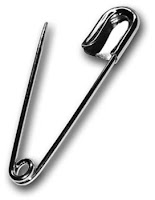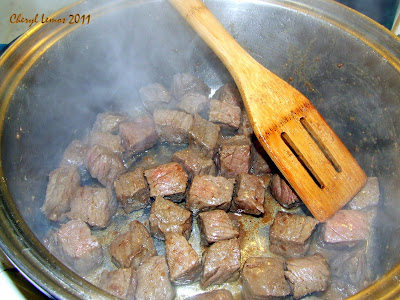Safety pins are so versatile . . . they keep your clothes from falling off, they can be used as jewelry, and they can make a fashion statement. The safety pin as we know it was invented in 1849 for a rather practical reason. But probably not the purpose you might think. The creator, Walter Hunt, was good at thinking up all kinds of things . . . sewing machines, flax spinners, coal stove. Unfortunately, he failed to patent many of his ideas and didn’t make money off of them. However, he owed a friend a sum of $15 dollars and needed to come up with a way to pay him back. So he decided to invent something new. He decided to come up with a way to make straight pins safe. So, in 1894, from a piece of brass wire he made the first safety pin, by coiling the center and shielding the end. For this invention he took out a patent and sold the rights to it for four hundred dollars. He paid his friend back and had three hundred eighty-five dollars to spare. Of course, that’s nothing compared to the millions he could have made on his many other inventions.
Pins, regular straight pins, not safety pins were so rare in 12th century England
Nearly one hundred years later in the 1980’s, safety pins became an accessory to punkers. Among many other things . . . purposely-ripped clothes were held together by safety pins and safety pins were used as jewelry and as body piercings.
“The Safety Dance" was a popular single in the 1980’s. Punk band, Men Without Hats, wrote the song as a protest against bouncers stopping dancers pogoing to music in clubs. In a time when disco was dying a well deserved death, pogoing was new and strange. It was done by holding the torso rigid and thrashing about. Bouncers, unfamiliar with this new style of dance, thought it could be dangerous and kicked pogoers out of many clubs. Dangerous dance, hence . . . safety Dance. One misconception, in the era of a growing epidemic of AIDS infections, was that the song was a call for safe sex and the use of condoms.
The use of condoms was, indeed, growing exponentially in the 1980 and beyond. However, these penile protectors have been around for millennia. Egyptian, Chinese and Roman society uses various materials to keep winkies safe from bugs and disease. During the
The 16th century experienced an epidemic of syphilis, a sexually transmitted disease. Coverings of linen, silk and pieces of animal intestine slipped onto a love wand and secured at the base with a piece of ribbon. Latex wasn’t invented until the mid-1800’s . . . those very early rubbers had a seam and were as thick as an inner tube . . . yikes! Soon after it became safe and practical condoms became widely available. It wasn’t until much later that it was discovered that condoms prevented not only unwanted diseases but also unwanted babies. Hence making it safe to dance if you wanna.
________________________________
Italian Sausage & Steak Chili (A Crock Pot Recipe)
2 Tablespoons Extra Virgin Olive Oil
2 Pounds Eye of Round, Cut Into Small Cubes
1 Pound Hot or Sweet Bulk Italian Sausage
Salt And Pepper
3 Jalapeño Peppers, Chopped
1 Onion, Chopped
3 To 4 Cloves Garlic, Chopped
1 Teaspoon Dried Oregano
2 28-Ounce Cans Cannellini Beans With Juice
1/2 Cup Tomato Paste
1 Can or Bottle Beer – I Used A Lager
3 Cups Beef Stock
Heat olive oil in a skillet over medium-high heat, add steak and brown. When steak is browned transfer to crock pot. Brown to sausage in same pan used for the beef then transfer to crock pot.
Combine the peppers, onion, garlic, oregano, beans, tomato paste, beer and stock in the slow-cooker crock pot, and then close the lid.
Cook on low for 6 hours or high for 4 hours.
Serve in bowls topped with shredded cheese.












Tidak ada komentar:
Posting Komentar